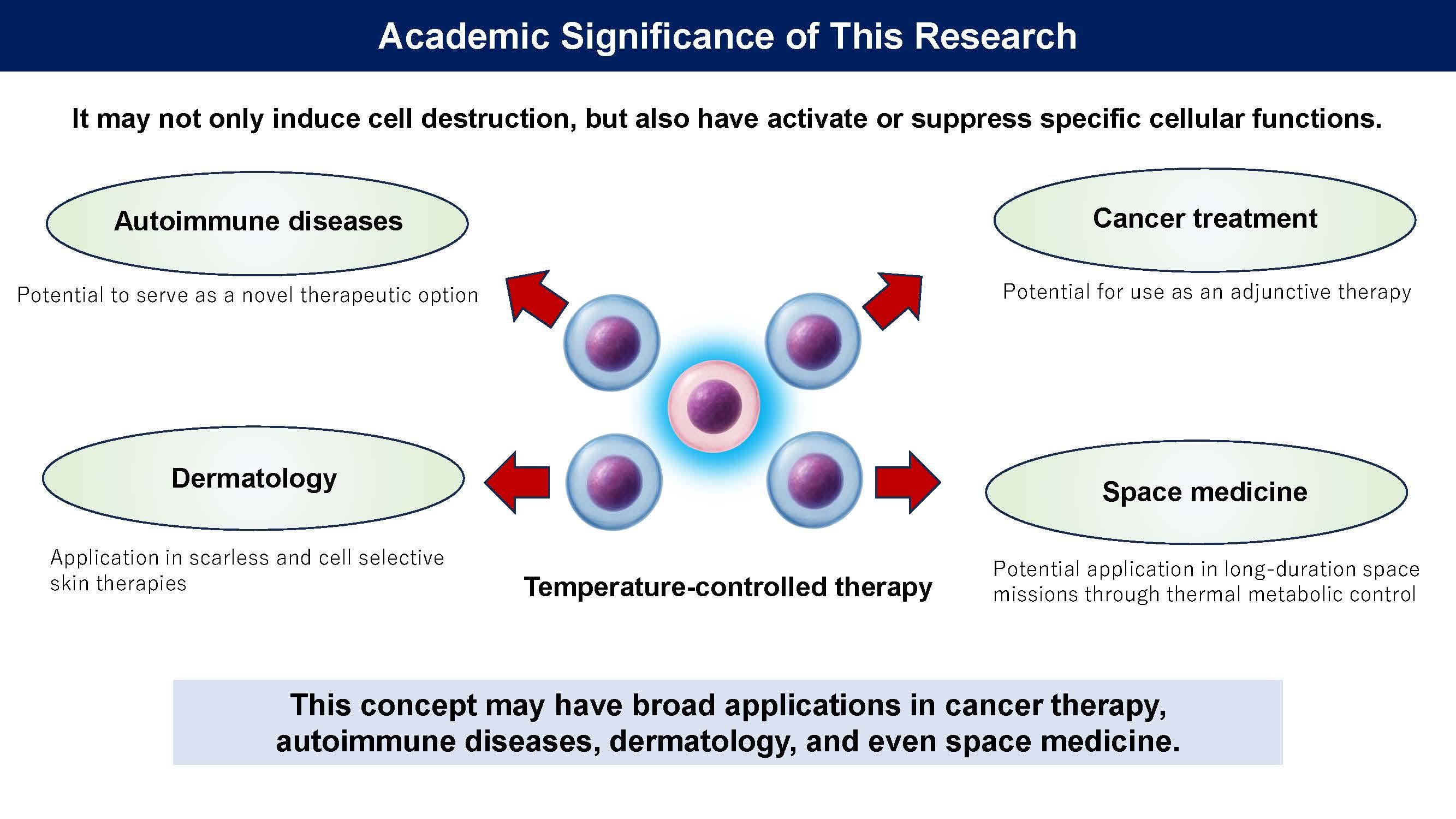Challenge Grant: Development of Cell-Selective Cryotherapy Based on Disease-Specific Temperature Response Mechanisms
Integration
Summary

This research project aims to establish a novel therapeutic concept based on temperature-controlled, cell-selective treatment. Traditionally, temperature has been viewed as a supplementary or destructive factor in medicine--for example, in icing, heating, or cryotherapy using liquid nitrogen. However, recent findings indicate that specific types of cells undergo apoptosis (programmed cell death) at certain low-temperature ranges, while surrounding normal cells remain unaffected. This cell-selective response to mild hypothermia opens the door to a new form of precision therapy that does not rely on drugs or surgery.
In particular, the study focuses on mitochondrial response under cold stress, as mitochondria play a central role in cellular metabolism and apoptosis. By analyzing the mitochondrial dynamics, membrane potential, and fatty acid composition in different cell types, we aim to develop a "temperature response map" that visualizes and quantifies cell-specific reactions to cold exposure.
The initial phase of the project targets congenital melanocytic nevus, a condition that currently lacks effective treatments due to the difficulty of surgical removal without significant scarring. Through collaboration with engineers at Kochi University, we are also developing fluorescent probes that change color in response to fatty acid alterations in mitochondrial membranes. These will enable real-time imaging of mitochondrial changes during cold exposure.
One of the core social values of this research lies in its contribution to non-invasive, scarless therapeutic approaches--an area of growing medical and societal interest, particularly in dermatology and plastic surgery. Furthermore, the research has already led to industry collaboration and has been selected for Japan's AMED PreF program, which supports the development of innovative medical devices.
Looking ahead, we plan to expand the application of this technology to other diseases such as keloids, skin cancers, and inflammatory skin disorders. In addition, because temperature control is closely linked to metabolic regulation, this project may also contribute to the field of space medicine, including future applications in long-duration space missions and artificial hibernation.
By integrating insights from clinical medicine, cell biology, bioengineering, and physics, this interdisciplinary project seeks to redefine temperature as not just a physical variable, but as a powerful biological tool for next-generation therapy.
SDGs
Project Members
About Project Members, ResearchersNote: ◎ indicates the project leader
| Name | Affiliation | Position | Field of Specialization/Research Interests |
|---|---|---|---|
| ◎ Tatsuyuki Ishii | School of Medicine | Instructor | Plastic Surgery |
| Yusuke Hirabayashi | The University of Tokyo | Associate professor | Neuronal Biology |
| Yosuke Niko | Kochi University | Associate professor | Organic Chemistry and Photochemistry |
| Kleszczyński Konrad | University of Münster | Principal Investigator | Molecular, Dermatoendocrinology |
| Kazuo Kishi | School of Medicine | Professor | Plastic Surgery |





